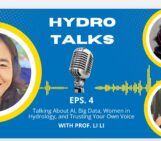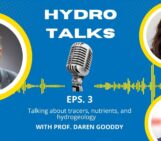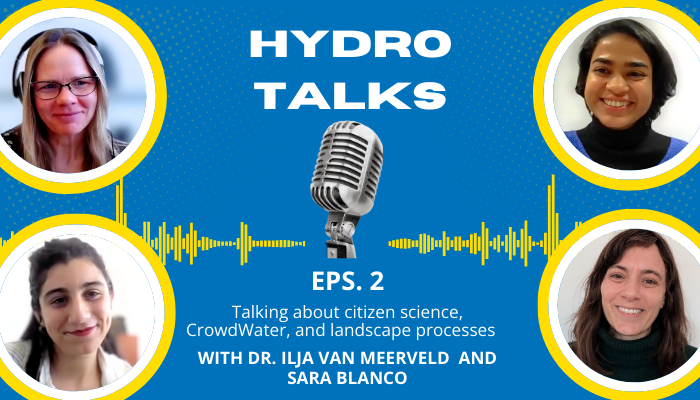
Welcome to HydroTalks, the EGU HS division’s podcast series where we discuss advancements, challenges, and opportunities in hydrology.
In this episode, we interviewed Dr. Ilja van Meerveld, a Group Leader at the University of Zurich, focusing on hydrological processes, landscape, and vegetation and one of the coordinators of the CrowdWater Citizen Science project. We were also joined by Sara Blanco, a PhD student working with CrowdWater, who shared insights into citizen science applications.
You can check out the podcast below, or read the interview summary in this blog! ill
Can you tell us about your research and how landscape variables like vegetation control stream flow?
My research focuses on the pathways that water takes toward streams. We need to understand how water is flowing towards the streams to be able to predict how much water will end up in the streams during extreme events and dry periods. Streamflow during extreme events depends on soil type, topography, land use, and climate. Another important variable is human impact as land management affects how water flows to the streams and thus how the streams respond to rainfall events.
What were your findings about how vegetation impacts flood and droughts? And how can you measure whether they will increase or decrease streamflow?
In the review paper that you refer to, we highlight that planting trees doesn’t always help with increasing low streamflow as is sometimes claimed. Trees increase transpiration, reducing available water. However, they can also improve soil structure, aiding groundwater recharge. Effects vary by location, so we need better hydrological understanding to determine when and where tree planting is beneficial for low flows. We often use models to predict how streamflow changes with tree cover, but they are too simplified and we lack field data. More field data on a range of conditions, especially monitoring what is happening to the water during reforestation programmes, would help refine the models and predictions.
Can you tell us about the CrowdWater project? What is it? What data is collected? Why is it important?
Hydrology lacks data, yet some things are easy to observe—like a stream’s level or color – while walking a familiar route. Citizen science engages people in environmental monitoring, raising awareness and increasing data availability. That is why we decided to launch CrowdWater. CrowdWater allows citizen scientists to contribute by observing dry streams, river and lake levels, stream color changes, plastic pollution, and more. This data can improve hydrological models by increasing observations from remote areas. The data can also be used to provide evidence of environmental damage and scientific proof of water related issues. Generally, participants agree on classifications, making the data reliable. We validate observations by comparing them with reference photos or cross-checking responses about streamflow.
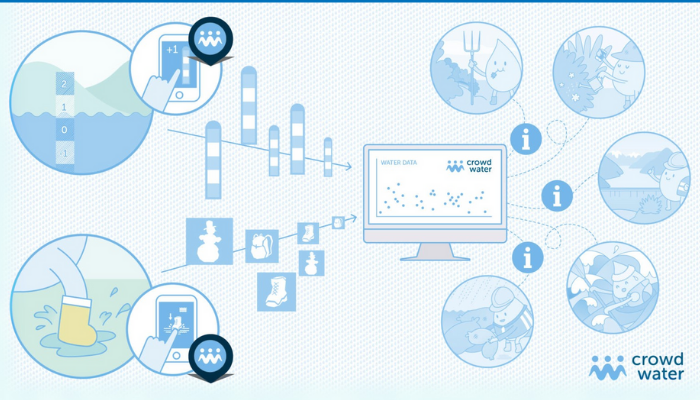
Do you get enough participants? And are there any barriers to people using CrowdWater?
Engagement is growing with time. We have regular contributors and occasional users, but all data helps. Participation varies by region—some join for fun, others to document environmental concerns. Interest in the app is increasing, with more groups suggesting new applications. The biggest barrier that people face is the digital divide. The app is designed as an affordable monitoring tool, but access to smartphones, internet, and education can still be a barrier in many places around the world. Our advice to anyone who doesn’t know if they can contribute is to just give it a try! The app is easy to use and there is nothing you can do wrong.
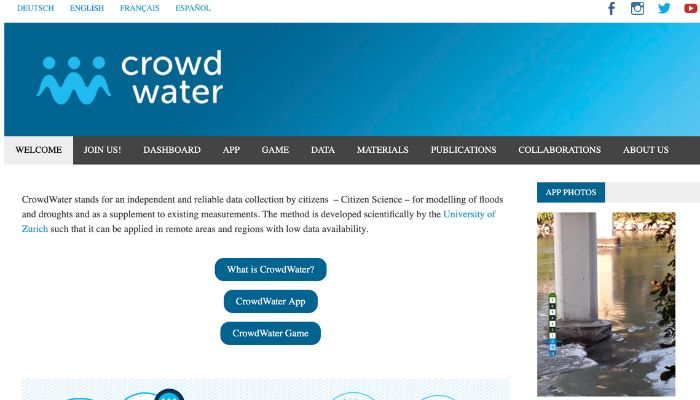
Can you share some interesting results using citizen science data? How is CrowdWater used?
Many projects have emerged worldwide. In Costa Rica, the CrowdWater app is used to track urban river restoration. In Mexico, to monitor river changes related to land disputes. A group in Chile used four years of water level data to calibrate a hydrological model. In the Netherlands, the app helps track plastic pollution in water bodies.
In your view, what do you think is the biggest breakthrough in hydrological science in the past decade, and what are interesting trends for the next few years?
Using tracers to track water movement through catchments and to show the importance of flow through the bedrock has been a major breakthrough. Future studies will likely involve big data and AI, but interdisciplinary field research combining hydrochemistry, hydrology, and ecology, such the work in critical zone observatories,will be crucial for future breakthroughs.
What is your advice to early career researchers?
Many people suggest to be strategic but I would avoid being overly strategic or to only pursue high-prestige, low-effort tasks. Meaningful work comes from collaboration and kindness and that makes research so much more enjoyable.
Listen to the full HydroTalk podcast for more insights from Dr. Ilja van Meerveld and Sara Blanco. Stay tuned for upcoming episodes exploring the frontiers of hydrology.

